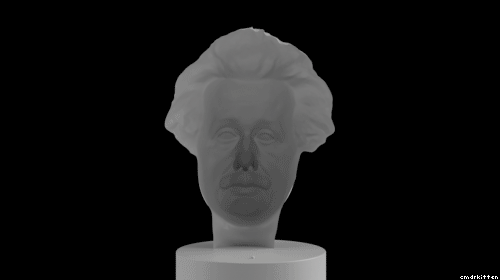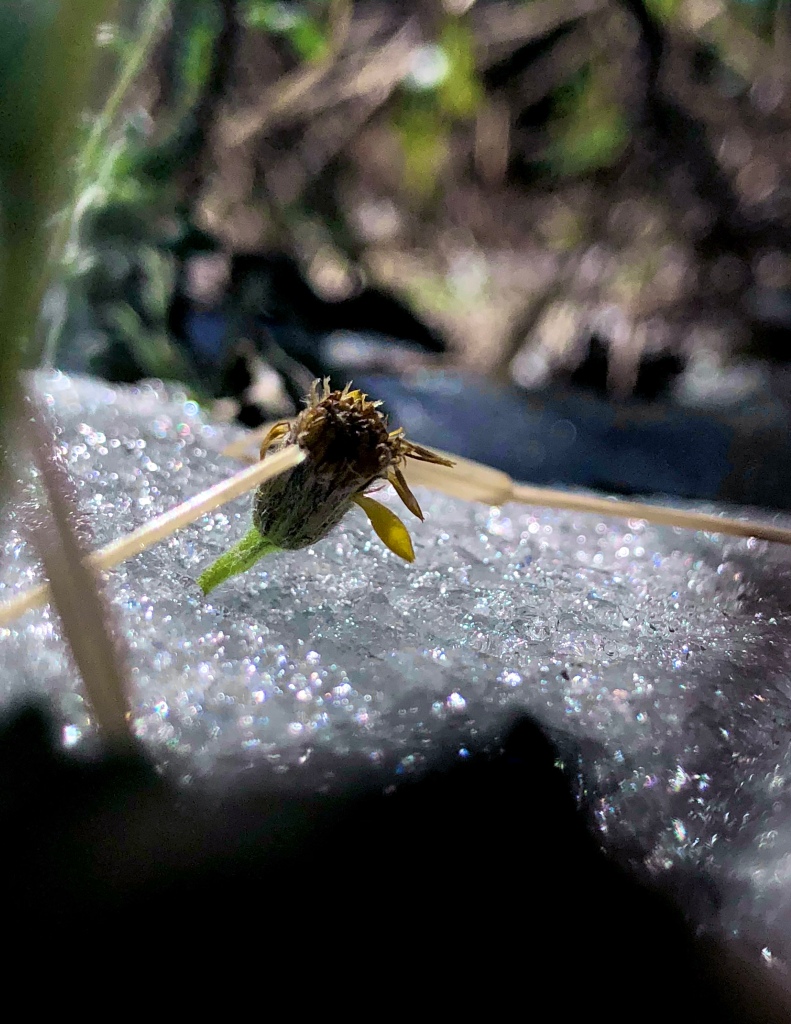People sometimes experience an effect I would term global sensory musicalization under the effects of psychedelic drugs. Some have noticed that the droplets of water in the sink begin to have musical notes assigned to them, whereas they might normally sound more like white noise or like arbitrary sounds. A series of droplets often forms a melody, a coherent pattern. Some may notice that temporal events appear to associate together in forms that appear like dances. People’s walks, their bodily motion, their speech, everything can seem to flow with the quality of music. The visual symmetry patterns may be ‘visual music’, as much of music is based on repeating patterns and symmetries.
Is this merely a hallucinogenic effect? I don’t think so.
The first part of this puzzle has us exploring the world of sensory illusions.
Speech-To-Music
There is a phenomenon known as the speech-to-music illusion. This concept was originated by a researcher who noticed that repeating a segment of speech can ‘musicalize’ the segment.
Below is a video of the speech-to-music illusion. Listen to the audio from start to end and then replay the first part again where it runs through the full sentence. You’ll notice that you can no longer perceive it as a normal sentence after your brain has been trained to observe the repeating phrase.
Many temporal (time-based) illusions seem to rely on repetition. There is the motion after-effect illusion, where you stare at a spiral and then look away to find your walls melting and warping. This also involves a kind of priming of visual motion. Below you can test this out for yourself.
There are also flicker-based illusions. This one involves repeated cycles of light and darkness and actually tends to produce a full-range of psychedelic effects in certain people. The effect you will first notice is geometric patterns appear in the video that is linked below. You may notice the walls melting after you look away if you watch this for a while. I’ve personally observed fractals, wall drifting/melting, and enhanced or altered depth perception that lasts about 10-20 minutes after I stop.
DO NOT CLICK IF YOU HAVE EPILEPSY ! ! !
These may all have different mechanisms, and outcomes, as well as utilize different sensory modalities, they share the property of repetition and a kind of training or priming.
Music Is An Illusion

Music could very well be the speech-to-music illusion. It has been described as an illusion before. Let’s step back and consider what makes music, music, in the first place. At it’s core, repetition is a key theme of music. If music droned on without repetition, pattern, or any sense of ‘symmetry’, how would we recognize it as music?
Musicality seems to emerge from the comprehension and predictability of an auditory sequence of events. This repetition may allow temporal auditory events that would normally sound arbitrary or have a quality of low comprehension to become meaningful and ‘comprehended’.
Consider the concept of noise. The concept of noise in sound is essentially that the sound is too chaotic to form meaning. Grey is like color noise. With grey, the sense of color has become neutralized. Noise is essentially a jumbled mess. With sound, white noise occurs often when there are too many different frequencies and the timbre begins to sound like static or grainy. Most auditory events are like ‘noise music’.
By this, I mean that most of the sequence of sounds we hear in natural contexts, like the sounds of cooking in the kitchen, the sound of rain drops hitting the window, are really the noise of our musicality sense. These natural auditory sequences that we observe in daily life are too disorganized, unstructured, asymmetric, complex, chaotic, and incomprehensible to be registered as music. In the same way that grey appears to lack color and the same way that white noise seems to lack discernable definition, musical noise seems to be non-musical.
Music may be the art of exploiting the auditory illusions that arise through repetition, organization, and symmetry. Perhaps our auditory sense is especially privy to this because of the way we evolved to detect synchronicities of sound for the purpose of language. Perhaps it is auditory acuity that humans have developed, which allows us to observe more patterns and meaning in this sense compared to others. Music is the artform that is designed to exploit the speech-to-music type of illusion. It is the process of transforming auditory stimuli into an emotionally intense psychedelic intoxicant.
What if the emotions we experience in response to music are synesthetic?
Synesthesia is when our senses cross, for example, hearing colors. Sound may be synesthetic with emotion because of the way certain sounds are intended to bleed into emotion. Consider an infant crying, something that should quickly elicit an emotional response or else risk the loss of the child. Our ancestors probably evolved vocalizations to elicit emotions before we evolved speech for complex meanings.
I’ve covered illusions very often in the past, notably claiming that they are learned and habituated sensory or even cognitive responses that occur because of learning. They are like a perceptual auto-correct system. We are presented many repeating patterns in the world that we eventually learn to expect because they are so consistent. In the case of the motion after-effect, the repetitive stimuli induces an expectation that is primed by the previous moments of consistent repetitive experience. This experience becomes automated.
Consider the hollow-mask illusion:

It is unlikely that we would come across a face structure that has inverted dimensions. Perhaps in early life we are open to this possibility but as time passes, the room for being open to the possibility shrinks as we are so consistently trained to expect forward facing faces. Then we observe this illusion and it appears to us as forward, because our brain doesn’t even take the time to check whether it is forward or inverted. It is an auto-correct, and as we all know, auto-correct fails very often. It is worth noting that this illusion does not work on those experiencing psychosis, those on cannabis, or those on dissociative drugs. I’ve explored how illusions like the one shown above are the product of learning more fully in Desummation, if you are curious to read more about this.
Psychedelic Musicalization

Psychedelics may bring about a clarity to what was once perceived as noise. These magical drugs may sharply increase our ability to find symmetry, meaning, organization, and comprehension in the sensory world. What was once grey and noise-like may become colorful and defined into a recognizable shape. Symmetries may be observed all around. Are psychedelics musicalizers of our senses and cognition? Musicalization can be viewed as the enhancement of perceptual coherence, most familiarly within (but not limited to) the temporal domain.
Perhaps the psychedelics induce a global-perception-to-music illusion.
I suspect that the effects reported on psychedelics are an acceleration of the development of these kind of illusions that were displayed throughout this post. So instead of needing 45 seconds of repetitive stimuli to develop a trained illusion such as the motion after-effect, you suddenly only need 1-2 seconds, or perhaps even less time. It might be an effect of enhanced learning or priming. We have observed enhance associative learning with psychedelics such as LSD as well as enhanced learning and memory with DMT.
On psychedelics, this musicality may emerge from every sense with less repetition needed. I’ve experienced an effect while on cannabis that rendered my world like a dance sequence. Each time movements in my my vision had synchronicities, the overlap seemed associated. If a person was talking while someone is walking, the simultaneous points at which a consonant occurred along with the person’s foot hitting the ground appeared as if the events were linked. This occurred with every motion people made and their collaborative movements appeared like a dance, as if I were in the midst of a musical performance. People also notice that music itself is in fact even more musical than it was before taking the drug, that each component of the song is more lucid than they’ve ever observed before.
The emphasis observed in the speech-to-music illusion may need less or even no repetition at all in order to produce the same kind of emphasizing effect. Even the synesthetic-emotionality that emerges from hearing transcendent music seems to emerge from visual events experienced on the psychedelic drug. For example, observing the patterns in the tree tops of a forest may elicit the same kind of intense emotions that music tends to give us.
Musicalization may be a transition from arbitrary noise, to meaningful patterns. A transition that involves an enhancement of acuity as well as enhanced learning. The acuity allows us to raise the threshold for which sensory information becomes noise, while the learning allows us to form meaning and relate temporal events so that we can see the temporal patterns.
What other forms of ‘music’ may exist besides the familiar auditory form that we know of? To name a few: Dance may be kinetic music. Enhanced coloration may replace greys and neutrals. Fractals may be shape music, replacing structural noise with coherent shapes and organization. Consider the below synesthetic presentation of cymatics. Cymatics is the study of sound made visible, in which auditory vibrations are displayed visually through some medium such as water or grains of sand. While you watch this, consider that sound is flickering, like an auditory strobe light. These patterns are very similar to the ones that you experience in the stroboscope video.
In the case of the speech-to-music illusion, it may be that everything around us is already “like music” but we only notice this musicality after the stimuli repeats enough times for the depth and nuance of the auditory stimuli sinks in, enough so that we can fully process it in relation to the other temporally neighboring sounds occurring in the auditory sequence. Rhythm may be the geometry of temporal events. This repetition may stimulate memory processes that allow us to compare and associate the various temporal events together.
On the other hand, speech is normally lacking in repetition in this way, it is more sporadic, chaotic, and disorganized than music is (although, some people do purposely exploit repetition in speech, especially in advertising and politics). The evolution of language may have ramped up our sensitivity to the temporal auditory dances in speech which allows us to understand the nuance in such a chaotic and noisy form of communication. We may have evolved to have an enhanced comprehension in the auditory domain because being aware of extremely specific frequencies and changes of frequencies has become critical to human life.
Perhaps it is especially infants who are seeking coherence in the world to transcend the chaos of noise that they are born into and so they may be more ‘psychedelic’ than adults until some semblance of functional coherence is assigned to the world, at which point we begin to sink into an already programmed world of illusions made from our (Bayesian) ‘priors’. This leaves us with a reduced sense of acuity because we only become aware to the degree that it is necessary for function in life. This degree of necessity for sensory acuity is set by the environment, based on training in childhood.
Psychedelics may help bring back our capability to see all the various patterns that we have decided weren’t important enough to notice, perhaps because being so high in that state is clearly dysfunctional in human society. Instead, we live life in a state of minimal, yet highly intelligently-designed (by our brains), awareness. I’ve explored this concept of childhood psychedelia in The Phoenix Effect, if this is peaking your curiosity.
. . .
If you found this useful, consider joining the Patreon!
Special thanks to the nine patrons: Alex W, Cody, Sarah Gehrke, Melissa Bradley, Morgan Catha, Niklas Kokkola, Abhishaike Mahajan, Riley Fitzpatrick, and Charles Wright! Abhi is also the artist who created the cover image for Most Relevant. Please support him on instagram, he is an amazing artist! I’d also like to thank Annie Vu, Chris Byrd, and Kettner Griswold for your kindness and making these projects and the podcast possible through your donations.
If you’d like to support these projects like this, check out this page.
If you liked this, follow me on
Find the amazing discussion for this post on Reddit:
